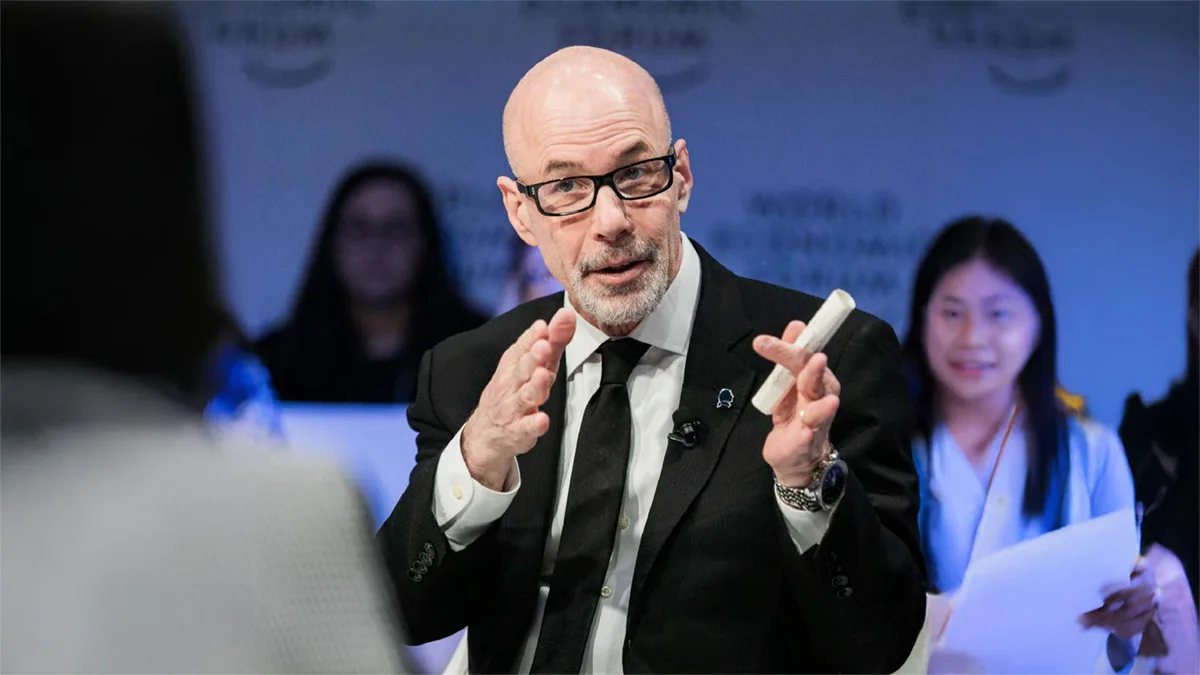
Overview
Stephen K. Klasko, MD, MBA, has spent most of his career as a protagonist of transformation within large healthcare systems .
Transforming Health Equity and Payer-Provider Relationships Means Risk-Taking, New Partnerships and Shifting Cultures
Stephen K. Klasko, MD, MBA, trained as an ob-gyn but has spent most of his career as a protagonist of transformation within large healthcare systems—no easy feat in an era beset by enormous external and internal pressures amid tight margins, risk-averse cultures, and reams of bureaucracy.
Change takes years, decades even, but he is adamant that the status quo hasn’t worked for anyone – providers, payers or patients – leading to precarious financials, low staff morale, and less than optimal care for many patients.
Still, Klasko says, most healthcare system leaders are reluctant to take major steps necessary to ensure their organizations thrive in a challenging world.
“They are afraid, and their avoidance of risk is their biggest risk,” he said.
As a result, 40 percent of US health systems lose money, he pointed out.
Klasko’s track record leading healthcare systems through tremendous change has brought him to General Catalyst, the global venture capital firm that is very publicly staking a significant part of its investment strategy on AI-enabled transformation of the healthcare delivery system.
There, as an executive in residence, he advises the VC’s diverse portfolio of digital health startups, as well as its growing roster of external healthcare system collaborators, who are engaging in new kinds of alliances.
Previously, he brought his impatience with the status quo to Thomas Jefferson University (TJU) and Jefferson Health in Philadelphia, where he was president and CEO from 2013 to 2022, and before that, he held leadership roles at the University of South Florida and Drexel University.
Re-engineering Healthcare Delivery Through Consolidation, Governance and Cultural Shifts
At Jefferson, Klasko drove massive structural and cultural changes.
“To paraphrase Steve Jobs, I did not want to spend the next 10 years trying to get from a 2 percent to a 4 or 5 percent margin in a commodity market,” he said. “I wanted to deal with some of the most challenging aspects of running a healthcare system, like equity and payer-provider relationships. I was willing to disrupt everything to at least have a chance to achieve those goals, but I couldn’t do that” if TJU’s ownership structure at the time stayed the same.
Klasko believed that to thrive, community-oriented healthcare systems like TJU would need creative partnerships with traditional payers, which could give providers access to “the first dollar premium.”
Similarly, they would have to form new kinds of relationships with each other that would give them opportunities to invest in and gain equity in innovative companies.
The story of how Klasko built TJU is a blueprint for strengthening healthcare systems in a rapidly changing world—noting that that environment has continued to evolve, so solutions for problems of 2013, when Klasko took the helm, are not necessarily optimal for today.
The process required a combination of financial engineering, continual M&A, vertical integration, and open-minded leadership. It wasn’t for the faint of heart.
Growing Revenues from $1.5 Billion to $10 Billion in Less Than a Decade
In 2013, TJU was small ($1.5 billion in revenues), but organizationally complicated. It had one campus, two hospitals, and three leaders – a president of TJU, and CEOs of TJU Hospital and JHS – who collectively reported to three boards of directors consisting of 100 members.
Congress had just passed the Affordable Care Act (ACA), which emphasized initiatives that encouraged adoption of value-based medicine over traditional fee-for-service reimbursement. These measures were designed to prioritize patient care while decreasing costs but in doing so, they put enormous pressure on hospital margins. Hospitals all over the US were forced to take new steps, including diversification of their revenue streams beyond treating patients, and consolidation.
Many healthcare systems did not sufficiently respond to these challenges. Healthcare system CEOs typically say they embrace innovation and community engagement, but they do not follow through with the necessary structural and personnel changes needed to be impactful, Klasko said.
Importantly, the people they assign to execute on these goals may not be properly incentivized and tend to be mid-level executives.
In the next decade, Klasko led TJU through a steady series of successful mergers. In nearly all cases, the deals were made using governance as currency—money did not change hands. By the time he left TJU, it was a $10 billion integrated delivery and financial system, consisting of 18 hospitals and an insurance company.
Building the largest health system in Philadelphia
“I wanted to become the largest health system in Philadelphia without out-Penning Penn Medicine,” he continued. Penn Medicine, the healthcare system affiliated with the University of Pennsylvania, is one of the nation’s top-ranked academic medical centers ( #13 in 2023), according to US News & World Report.
To get there, when Klasko joined TJU, he saw quickly that the system needed to gain access to capital. For the last 19 years, TJU had been involved in a merger with Main Line Health, another important regional healthcare system, and Main Line, a double-A rated community healthcare system with a well-established financial track record, was the merged system’s liaison with banks.
Klasko wanted to de-link from Main Line to accomplish his goals, but once independent, TJU would need to stand on its own in the financial community if it wanted to succeed in its request for a $365 million line of credit.
The plans included breaking the grip of the Philadelphia region’s biggest insurer, Independence Blue Cross, which held a 65 percent market share, and getting TJU more involved in the risk-bearing insurance business. TJU’s decision to hire Aetna, not Independence Blue Cross, for employee insurance was a crucial early achievement.
So was TJU’s controversial acquisition of Philadelphia’s last safety net hospital, Einstein Healthcare Network, which took three years and involved extensive litigation. Ownership of Einstein was key to Klasko’s plans to transform TJU into an integrated healthcare delivery system.
Einstein at the time owned 25 percent of Health Partners Plan, a Medicaid insurance provider that TJU acquired through the deal. The resulting merged entity became the largest health system in Philadelphia and the first to integrate delivery and financial services.
Leveraging telehealth to delivery health equity
As part of the transformation, Klasko also drove cultural changes and adoption of a new mission, aimed not at being biggest, which was standard industry speak, but at improving lives and re-imagining relationships with stakeholders and delivery of care.
TJU wasn’t going to win Nobel Prizes for research, he reasoned, but it could stand out for its smart approach to adopting new technologies. At his insistence, for example, TJU placed a big, early bet on telehealth, starting the telehealth service JeffConnect in 2015 as a powerful virtual tool for engaging patients and addressing health inequities—a move that positioned TJU well a few years later when the pandemic hit.
To jump start the telehealth initiative, Klasko hired a team from Penn Medicine—giving them a splashy entrance that eluded them at Penn Medicine, with the latter’s emphasis on higher profile, top flight scientific research.
Getting the bulk of the TJU faculty on board with JeffConnect was another story--involving brute force with mandatory sign ups and minimum—albeit very loose—quotas for virtual patient appointments, hopefully made increasingly appealing by continuous technological improvements.
That embrace of change, digital health and the movement to an integrated healthcare delivery system attracted several of the largest donations in TJU’s history.







